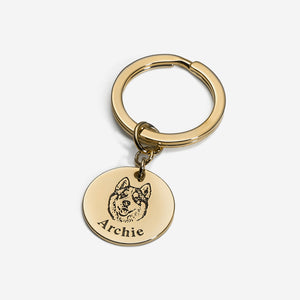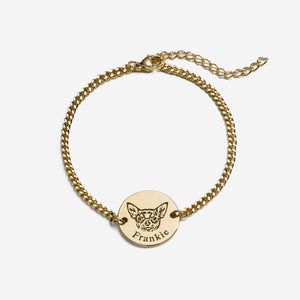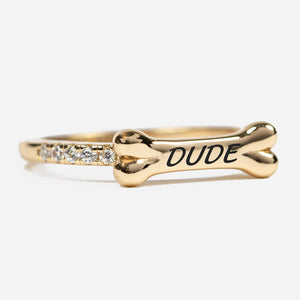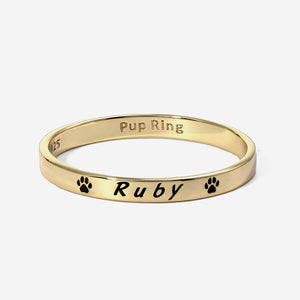Owning a dog comes with a lot of responsibilities. They have to be walked, fed, and exercised regularly. There’s something the average person might not think about when adopting their dog though. Even if they have short fur, they still might need other grooming maintenance- their claws.
All dogs are different in a lot of ways, and that includes claw trims. If your dog is outside a lot, or goes on long walks on the pavement regularly, they might not need frequent trimmings. Some dogs also just have claws that grow slower or faster. Some dogs have really large claws that might take a slightly different type of tool to tackle. Some dogs will have dark claws, some will have light ones, and some will have both. No matter what kind of claws your dog has, it’s important for you to be aware that healthy claws are an often overlooked, but very important part of your dog’s health.
 If you hear your dog’s claws clicking when it walks across a hard surface, they’re too long. Long claws can cause a lot of problems for a dog’s health. First off, a dog’s claws were originally meant to help them climb steep, uneven surfaces, so when a dog’s claws touch the floor, that’s an instinctual sign that their posture needs to change from what it should be walking on a flat surface. Imagine if anytime you were walking on level ground, you shifted your weight and always walked as if you were climbing a mountain. Uncomfortable and probably not healthy, right? In dogs, this can cause long-term problems like arthritis and similar joint problems. As a dog’s claws continue to grow longer and longer, they become more prone to breaking or might even crl under their feet, pushing their toes sideways as they walk or even eventually growing into their foot pads.
If you hear your dog’s claws clicking when it walks across a hard surface, they’re too long. Long claws can cause a lot of problems for a dog’s health. First off, a dog’s claws were originally meant to help them climb steep, uneven surfaces, so when a dog’s claws touch the floor, that’s an instinctual sign that their posture needs to change from what it should be walking on a flat surface. Imagine if anytime you were walking on level ground, you shifted your weight and always walked as if you were climbing a mountain. Uncomfortable and probably not healthy, right? In dogs, this can cause long-term problems like arthritis and similar joint problems. As a dog’s claws continue to grow longer and longer, they become more prone to breaking or might even crl under their feet, pushing their toes sideways as they walk or even eventually growing into their foot pads.
The worst part is, if your dog’s claws have been overgrown too long, the quick lengthens to match the length of the claw. The quick is like the pink part of your own nails, and it supplies blood to the claws so they can grow. In short, this means trimming the claws back to a healthy length can take weeks or even months as you try to get the quick to recede between trims.
It is important to start teaching your dog to tolerate trimmings as early as possible. Claw trimming isn’t a natural part of a dog’s experience, so jumping straight in can be confusing to a dog. Even worse, if your dog has had a bad trimming experience in the past, it might be terrified of trimmers, or start getting anxious or aggressive as soon as you touch its paws.
If you have a puppy, holding and playing with its paws on a regular basis is a great way to show it that handling paws is no big deal at all, and gives you a great head start towards an easy trimming routine. Older dogs might not take to it as quickly, but it’s important to make sure your dog is comfortable with every step of the progress. If you move too quickly to the next step, you might cause your dog’s first grooming experience to be a scary one, which will send you a few steps back. Of course, if your dog seems totally fine with the whole process, you’re good to go. This guide has a lot of general information for claw trimming, but also goes into a lot of detail for owners whose dogs are already struggling to get through a trimming at all.
Make sure when you’re getting ready to trim your dog’s claws you have lots of good treats on hand for training purposes. You might also want a second person to help you the first few times until you and your dog are totally happy with the trimming experience. You don’t necessarily want the other person holding the dog down- if the dog feels trapped it will most definitely be difficult to do trims in the future- you just want an extra hand or two for dispensing treats at just the right time. Timing is key here!
Trimming your dog’s claws can already be an intimidating experience, so choosing the right tool for the job can be a big first step. There are tons of different types of clippers and trimmers out there. Whatever you choose, you will need to be comfortable using it, and your dog will have to learn to be comfortable with it as well. There are really 2 main categories of tools for trimming your dog’s claws: clippers and grinders. There’s a bonus method here at the end, but for now we’ll focus on these.
Clippers can generally come in two types: scissors and guillotine. The scissors are built strong and are ideal for big dogs’ claws and work like a pair of scissors. Guillotine clippers are better suited for medium and small dogs, and work by placing the dog’s claw in an opening where a blade slides down and slices off the tip of the claw. I have personally tried these trimmers, and while they can work, my dog already struggles with claw trims and I’m afraid of cutting into the quick of his claws. I’ve done it before, and it is NOT a good experience.
For this blog I decided to try desensitization training with my dog using a dremel trimmer. I thought a grinder would be easier to use, it would leave his claws smooth, and I can work a little at a time so I would be less afraid to trim too far. Confession here, I also have a lot of anxiety about trimming my dog’s claws. I hoped he would have a less severe anxiety reaction to a tool he wasn’t used to seeing too.
If your dog’s claws are clear, great! The quick will be relatively easy to identify. It’s a curved, pink-looking part inside each of your dog’s claws. The quick is what carries nutrients to the claw so it can continue to grow.
 However, if your dog’s claws are dark, it can be really difficult to identify the quick.If you trim the claw back just a little, you will see a white, chalky color in the center of the claw. If you keep going, a dark spot will start to show in the middle of the white chalky spot. That’s exactly where you want to stop the trim, because the quick is right behind that dark spot. Especially if your dog’s claws are overgrown and you want the quick to recede, you will need to trim this far for it to start to dry out.
However, if your dog’s claws are dark, it can be really difficult to identify the quick.If you trim the claw back just a little, you will see a white, chalky color in the center of the claw. If you keep going, a dark spot will start to show in the middle of the white chalky spot. That’s exactly where you want to stop the trim, because the quick is right behind that dark spot. Especially if your dog’s claws are overgrown and you want the quick to recede, you will need to trim this far for it to start to dry out.
Here’s how I finally got my dog to be comfortable with having his claws trimmed! I tried many times in the past to get my dog to tolerate trimmings, but any time I even looked at the clippers he would tuck his tail between his legs and run into a different room to hide. Obviously, the first step was to desensitize him to the new trimmer.
I started leaving the trimmers out where we would normally sit together during the day. While we were relaxing, I would casually pick up the trimmer and set it down. He would still dash to another room right away for at least a week when I started doing this. After a while he would still look nervous but he at least wasn’t running at the sight of them. Any time I picked them up for more than a few seconds and looked at him, he still ran away, but the more we practiced he slowly became okay with me holding the trimmers while sitting on the couch.
Next I grabbed a couple of handfuls of kibble. I sat on the floor and placed the trimmers behind me and encouraged my dog to come near me. He was very shy at first, because I had always trimmed his claws while sitting in the floor, but he walked over. I fed him a few pieces, asked him to shake a few times, and while he was distracted I moved the trimmers right by my leg so it was at the edge of his sight, but kept feeding him one kibble at a time to keep him chewing.
The reason this is how I approached the first step is that my goal was counter-conditioning. Trimmer = scary, but trimmer = treats too. I wanted to work him towards a neutral feeling about the presence of the trimmer. This also kept me from getting ahead of myself and rushing to the next step (which has pretty much always been my mistake when working on anything involving his anxiety.)
After some practice I started only giving treats when he could see the trimmers to strengthen the association of “trimmers = food” and not just “mom has food now”. This continued to then touching the trimmers, and then picking up the trimmers. As you transition between steps, you’ll want to time the treats so that you are treating less for the “easy” steps and narrowing the prize to the specific behaviour you want- this is called “shaping” and applies well to a lot of other complicated training scenarios. I also started turning the dremel on during these steps to desensitize him from the noise, but it seemed like he was more afraid of the tool in general rather than the sound associated with it. Sometimes I even treated him using the hand holding the tool.
Here is where you might start wanting spare hands! I started getting a “paw” in one hand while holding the dremel in the other. You will want to start timing your treats as precisely as possible. The very first time you touch the tool to his paws, he gets a treat at EXACTLY that moment. Now we’re not distracting with treats, we’re using them to get our exact desired behavior. I was honestly really surprised how quickly he took to having the running dremel touch his paw (just the side of the tool to the side of the paw. All these in-between steps help slow you down and strengthen your progress.)
Then, at the exact moment I touched the tool to his claw, JACKPOT. I threw several treats in front of him and let go of the paw immediately, all at the same time. We did it.
I got a little excited and tried a couple more times but I could tell he was starting to get nervous, so we ended our latest training session there. Keep in mind all of these steps didn’t happen in one session, but they didn’t last very long either.

Guess what? You can actually teach your dog to file down its own claws! This method involves a bit of DIY and you will need to closely supervise your dog to make sure they don’t have so much fun that they file too much. You’ll need some treats, 80 grit sandpaper, and a board to glue the sandpaper on.
Set up your filing board and call your dog over to investigate it. Start by holding it at an angle and encouraging your dog to put its paws on the board. Treat whenever you get a behavior that’s in the right direction! Once your dog gets a hold of touching the board, start treating when it scrapes its nails against the board. Depending on your dog, it might prefer to have the board flat on the ground.
Eventually you’ll want them to perform a digging motion on the board, filing their own claws for fun! Like stated above, you will really want to stay and watch your dog extremely closely and keep checking to make sure they don’t get so excited they wear their claws down all the way to the quick.
And there you have it! A complete guide on keeping your dog’s claws healthy. Hopefully you now know how to approach trimming time, and can teach your dog to look forward to it as well. I hope you and your dog are staying happy and healthy, and I look forward to continuing to write for you!!







